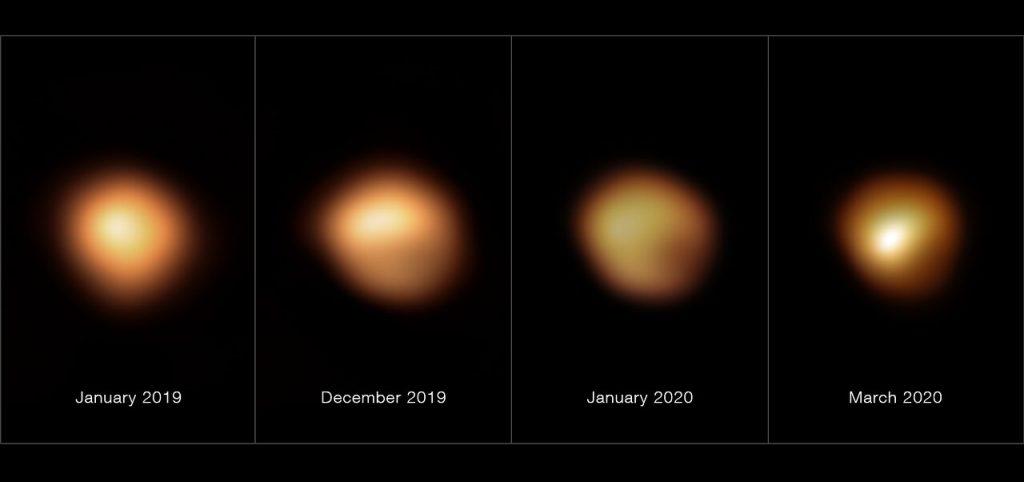With the help of a super-powerful telescope, scientists have been able to unravel the mystery of the recent dimming of the star Betelgeuse.
The red supergiant Betelgeuse is known as one of the biggest stars that can be seen with the naked eye. In October 2019, its brightness suddenly began to decline.
By February 2020, the brightness of this luminary in the constellation Orion has fallen to a record low – 40% compared to normal. This has led to speculation that Betelgeuse is about to turn into a supernova, and this will be accompanied by an explosion of such force that it can be seen on Earth even during the day.

Despite such expectations, by April 2020 Betelgeuse had returned to normal.
Only now have images of the star obtained with the help of the ultra-large telescope of the European Southern Observatory, along with data from the GRAVITY instrument, show what happened to her.
“We have witnessed the formation of so-called stardust. This time, we watched the star’s appearance change in real time over several weeks, “says Dr. Miguel Montarges of the Paris Observatory.
As noted, the surface of Betelgeuse is constantly changing. Giant gas bubbles grow and move on it. At some point, they broke away from the surface and went into space. As the star moved away, the temperature of the bubbles dropped, and eventually the gas condensed into solid dust. It was this cloud of dust that partially hid Betelgeuse from the Earth, especially in the southern regions.
